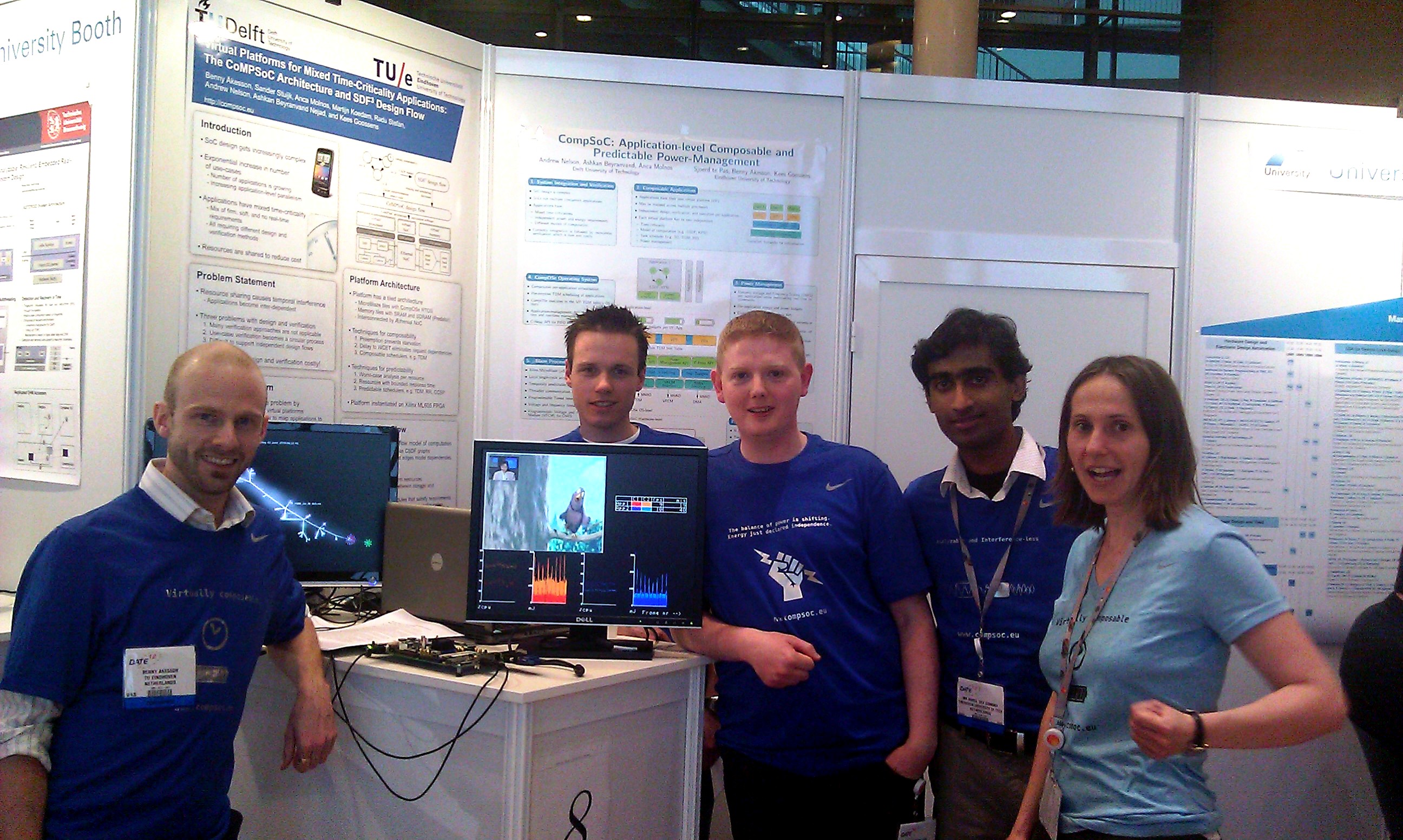Demo
This page describes the CompSOC demonstration was given at the DATE 2012 University Booth. The goal of the demonstration is to show composable execution of applications, which means that they are completely independent both in terms of timing behavior and energy consumption. This is an important system property that enables applications to be independently developed, verified, and deployed, thus reducing the design complexity of complex systems.
The demo features an instance of the CompSOC platform with three processor tiles and a monitor tile. The applications are two instances of an H.263 decoder running in parallel. The first instance runs at full resolution and is the main application in the demo, while the other one runs at a lower resolution as a Picture-in-Picture (PiP). The functional pipelines of both applications are split in two parts and are mapped across two of the processor tiles. Both applications are hence distributed and share processor and interconnect. The applications furthermore independently frequency scale the processor tiles, resulting in a complex use-case. The last processor tile executes the multiplexer application that merges the outputs of the two H.263 decoders and writes them to the frame buffer. Below is a screenshot from the demo, showing the two decoder instances executing concurrently.
We now describe the four different steps of the demo. For every step, there is a corresponding movie that captures the output from the frame buffer on the FPGA board.
Profiling run
On the first run, we disable the PiP application and record the timing behavior of the main application on the second core. More specifically, we record the particular clock cycle at which the decoding of the macro blocks in the frames is completed. We will later use these decoding times as a reference to determine if this application is affected by others. The two graphs in the bottom right are not essential to this experiment, but show the CPU usage and energy consumption of the application on the two different cores to which it is mapped.
Non-composable run
We now execute both H.263 instances concurrently. Since there are now two applications running, there are two graphs showing the CPU usage and energy consumption of the two cores. The graph on the right below the table shows the difference in decoding time for each block between the current run and the previously profiled run, measured in thousands of clock cycles. This graph shows that the system is not composable, since the PiP application interferes with the main application. One reason for this is that we use the Xilinx DDR controller, which is a non-composable platform component, to store data needed by the applications.
Composable run
We repeated the previous experiment, but this time on the composable system. The difference between the systems is that we use blocks RAMs on the FPGA board, which are inherently composable, instead of the Xilinx DDR controller. The interference graph in the movie now displays a flat line, which means that the decoding time of all the blocks in the main applications are completely identical to the profiling run with the PiP disabled. This shows that the applications execute in a composable manner and that the applications are temporally isolated, despite sharing resources.
Virtual batteries
The following movie demonstrates composable power management, where each application has its own virtual battery, displayed in the top right of the picture. Both applications have a equal energy budgets, but the main application requires more processing power to decode its image, causing it to drain its battery faster. As soon as the virtual battery of an application is empty, the application is terminated, preventing it from stealing energy from other applications. This type of individual energy budget per application enables e.g. a smart phone to reserve enough energy for a five minute emergency phone call, while the user is running power intensive applications, such as surfing the Internet over a wifi connection.
Lastly, we conclude with an action shot from the University Booth at DATE 2012, where parts of the CompSOC team is presenting the demo wearing CompSOC t-shirt custom-made for the event.



